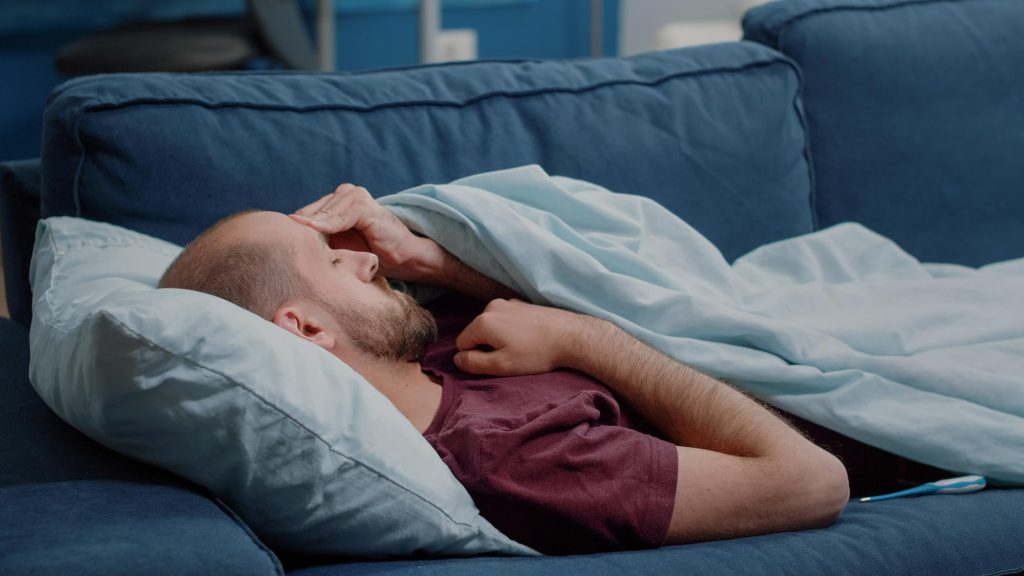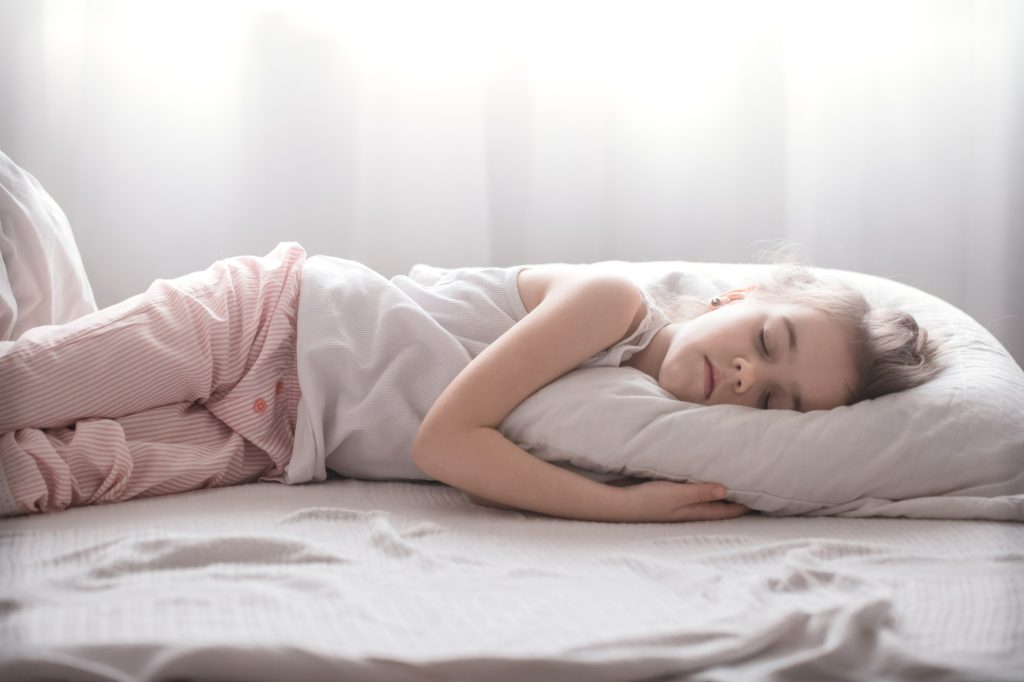
Image by Freepik
Waiting for sleep to come is the worst since it usually feels like the more you attempt to sleep, the more awake you get.
For individuals who have trouble falling asleep at night or, worse, have more regular episodes to treat insomnia, learning the trick to fall asleep fast might seem like a dream come true. While there isn’t a magic bullet that can make you fall asleep in under ten seconds every time, there are several tried-and-true sleep-inducing techniques that, with some practice, may get you on the road to a lifetime of undisturbed sleep.
In this article, we’ll look at some of the most well-liked strategies for getting to fall asleep fast. Here is all the information you need, from technological restrictions to mindfulness. Maybe it is gonna be a guide to treat insomnia, or something.
How Do You Get to Sleep Quickly and Treat Insomnia?

Image by Freepik
Sleep latency sometimes referred to as the amount of time it takes most individuals to fall asleep at night, typically lasts between 10 and 20 minutes. Therefore, if you’re already in this window, you can be confident that you’re getting a good night’s rest. But many experts agree that if you start to fall asleep much earlier or later than this usual 10 to 20-minute window, it might be an indication that something is wrong and your better sleep is being compromised.
Relaxation is the secret to falling asleep more quickly, end of the story. Studies have really demonstrated that the relaxation response is a physiological mechanism that benefits the mind and body by lowering stress and anxiety and, as a consequence, promoting faster sleep onset. And also managing your own mindfulness is the key to treat insomnia too.
Allocate some time before bed to practice relaxation methods like putting away gadgets, reading, listening to soothing music, or practicing deep breathing excercise. Likewise, ensure that your bedroom is a tranquil space. Is it hot enough? Too chilly? Is your mattress supportive and cozy?
You’ll have the most excellent chance of starting to fall asleep fast and better sleep if you make an effort to make sure all of your sleeping circumstances are ideal before you go to bed.
4 Basic Steps To Treat Insomnia Yourself
How Should You Deal With Inability to Sleep?

Image by Freepik
The worst thing you can do if you find yourself looking at the ceiling with racing thoughts and no indication of falling asleep is to keep lying still and attempt to force sleep; this will just make you irritated and keep you awake for a longer period of time. They are some common symptoms that make you start to treat insomnia.
Experts advise you to change things up instead. For instance, you can try spending a half-hour in another part of your home, away from your bedroom, to unwind, have breathing exercise or write in a journal.
If you often share a bed with a spouse, some sleep experts advise doing so for a short period so that you may stretch out completely and avoid being bothered by their breathing and movements. Or, why not try a different sleeping position? You may just need to reposition yourself sometimes in order to obtain your ideal sleeping posture.
Here are 5 Ways to Sleep Tight and Quickly

Image by Freepik
As was previously indicated, the key to fall asleep fast is relaxation. Here are our top suggestions for reducing sleep latency and getting a better, more fulfilling better sleep if you have to treat insomnia.
1. Keep Things Comfortable And Cool
Make sure your room is cold, dark, and comfy since temperature may significantly contribute to a restless night. The ideal sleeping temperature is between 15 to 19 degrees Celsius, so if your house has a tendency to absorb heat, invest in a reliable fan or air conditioner to keep things cool. Alternatively, you may choose a duvet with a lower tog rating and spend money on a comfy and supportive mattress or a memory pillow with cooling technology that helps control body temperature while you sleep.
2. Explore the 4 7 8 Breathing Techniques
When it comes to sleep-inducing meditation activities, breathing exercise methods are the way to go forget about counting sheep. The “4-7-8” breathing exercise technique is one of the most well-known and, with practice, it’s a terrific way to unwind your body, pay attention to your breathing, and divert your attention from your pressing need for sleep.
For this technique, find a comfortable posture, shut your lips, inhale for a count of four, hold your breath for seven seconds, and then exhale from your mouth for eight seconds while making a “whooshing” sound. Repeat for four complete breath cycles, but if you feel sleep coming on earlier, allow yourself to drop asleep.
3. Streamline Your Sleep Schedule
Although it’s understandable that life sometimes interferes with one’s sleep pattern, doing so is crucial to getting a pleasant night’s sleep. This is due to the fact that our bodies are governed by a circadian rhythm, sometimes referred to as a “body clock,” which enables us to recognize when we should naturally get up and go to bed. Therefore, it’s imperative that you start adhering to a regular sleep schedule and aim to obtain a decent 7 to 8 hours of sleep each night in order to encourage your body to work for you.
4. Put the Tech Away
You’ve been warned, browse no later than an hour before bed if you must. Technology use has been shown to have a detrimental influence on better sleep because of the blue light it emits and the mental effort it needs.
Speaking of stimulants, it’s important to avoid consuming them close to bedtime since they may keep your mind active late into the night and cause a lot of sleep disruptions, making it difficult for you to fall asleep and resulting in worse quality sleep when you do!
5. Try the Military Method
Try the military method, which includes breathing exercises and muscular relaxation methods, is said to be helpful even for those who have to attempt to fall asleep while sitting up. It takes a few weeks of practice to become proficient in this approach. Prior to relaxing your whole face, including your tongue within your mouth, make sure you are comfortable in bed.
To relax any tension that has built up, let your shoulders fall and your arms hang by your sides. Exhale to relax your chest, then concentrate on relaxing your feet, thighs, calves, and bottom as you go down your body. If this doesn’t help, repeat the phrase “don’t think” for an additional 10 seconds. After clearing your thoughts for 10 seconds, visualize a peaceful scene.
Say Goodbye to Bad Sleeping Schedule

Image by Freepik
As we already discussed that relaxation is the key to a good night’s sleep. Numerous studies have shown that listening to certain music, particularly classical, may enhance better sleep and accelerate sleep onset. Don’t worry if classical music isn’t exactly your thing, Alarmy also has tons of ASMR and sleep sounds to help you sleep peacefully and soundly. And Alarmy helps you to fall asleep fast even without breathing exercise technique or such complex methods.
Alarmy provides calm sounds consisting of ASMR, White Noise, Meditation as well



